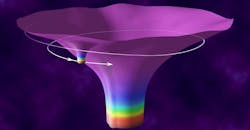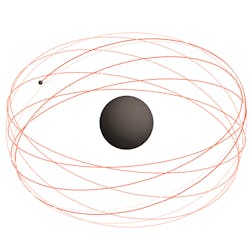Detecting future gravitational waves to unlock the universe’s secrets
Astronomy-focused research continues to discover new aspects of the universe—exoplanets, supermassive black holes, meteors, among them—yet space exploration is ultimately still in its infancy.
Researchers from the Centre of Gravity at University of Nottingham (England)—collaborating with teams from the Gran Sasso Science Institute (L'Aquila, Italy), the INFN Laboratori Nazionali del Gran Sasso (L'Aquila, Italy), SISSA (Trieste, Italy-based International School for Advanced Studies), and La Sapienza (Rome)—are hoping to speed up our understanding.
Using laser interferometer technology, the detection of future gravitational waves could potentially provide information on “unexplained aspects” of the universe. The Laser Interferometer Space Antenna (LISA), a space-based gravitational wave detector developed by NASA, the European Space Agency (ESA), and an international consortium of scientists, is able to observe gravitational waves with “unprecedented accuracy,” potentially boosting detection of new fundamental fields. Consider, for instance, scalar fields for which there is a single number associated with every point in space. The temperature of Earth's atmosphere at the surface is a prime example of a scalar field.
New fundamental fields are associated with various scenarios “as explanations for dark matter, as the cause for the accelerated expansion of the universe, or as low-energy manifestations of a consistent and complete description of gravity and elementary particles,” says Thomas Sotiriou, a professor and director of the Nottingham Centre of Gravity.
Extreme mass-ratio inspirals
Sotiriou’s group discovered LISA can detect gravitational wave signals from extreme mass-ratio inspirals—the orbit of a relatively light object around a much heavier object. These are generated during the end-of-life stage of binary systems where the two objects merge into one, according to the LIGO Scientific Collaboration, at the point where a stellar mass compact object orbits a supermassive black hole and eventually plunges into it (see figures). The technology can detect whether the smaller compact object in an extreme mass-ratio inspiral is endowed with a scalar field.With an anticipated launch date of 2037, LISA will ultimately be able to also detect and measure the scalar field charge at an unprecedented level of precision: “a dimensionless quantity that acts as a measure of how much scalar field the object carries.” LISA will operate among a constellation of three satellites orbiting the Sun and positioned millions of kilometers apart. The goal is to observe gravitational waves emitted at low frequency, “within a band not available to terrestrial interferometers due to environmental noise.”
LISA’s visible spectrum will ultimately allow the study of new groups of astrophysical sources, opening a new window on the evolution of compact objects in a large variety of environments of our universe.
About the Author
Justine Murphy
Multimedia Director, Digital Infrastructure
Justine Murphy is the multimedia director for Endeavor Business Media's Digital Infrastructure Group. She is a multiple award-winning writer and editor with more 20 years of experience in newspaper publishing as well as public relations, marketing, and communications. For nearly 10 years, she has covered all facets of the optics and photonics industry as an editor, writer, web news anchor, and podcast host for an internationally reaching magazine publishing company. Her work has earned accolades from the New England Press Association as well as the SIIA/Jesse H. Neal Awards. She received a B.A. from the Massachusetts College of Liberal Arts.


